‘Virtual Exhibits’
Virtual Exhibit Hall
Featured Virtual Exhibits:
- Smithsonian Education
- National Air and Space Museum
- National Museum of American History
- National Portrait Gallery
- National Postal Museum
- Smithsonian Institution Archives
- Smithsonian Photography Initiative
Other Smithsonian Units:
- Smithsonian Institution Building, the Castle
- Anacostia Community Museum
- Cooper-Hewitt, National Design Museum
- Freer Gallery of Art and Arthur M. Sackler Gallery
- Hirshhorn Museum and Sculpture Garden
- Steven F. Udvar-Hazy Center
- National Museum of African Art
- National Museum of African American History and Culture
- National Museum of the American Indian
- National Museum of Natural History
- Heye Center, New York City
- National Zoological Park
- Smithsonian American Art Museum and its Renwick Gallery
Smithsonian Center for Education and Museum Studies
The mission of the Smithsonian Center for Education and Museum Studies is to increase the Smithsonian Institution’s impact as a national educational organization.
www.SmithsonianEducation.org: The Gateway to Smithsonian Educational Resources:
![]()
 SmithsonianEducation.org is a vast website with tons of stuff for kids, parents, and teachers.
SmithsonianEducation.org is a vast website with tons of stuff for kids, parents, and teachers.
 Our Students section includes activities and games aimed at encouraging young people to follow their curiosity.
Our Students section includes activities and games aimed at encouraging young people to follow their curiosity.
 If you are planning a visit to the Smithsonian museums, first visit our Families section, where you’ll find tips on making the most of the experience, along with supplemental readings and activities.
If you are planning a visit to the Smithsonian museums, first visit our Families section, where you’ll find tips on making the most of the experience, along with supplemental readings and activities.
 Our Educators section includes a database of more than 1,600 Smithsonian lesson plans and other educational resources. All are searchable by subject, grade level, and applicability to state standards. For a tutorial on using the database, click on the audio tour below.
Our Educators section includes a database of more than 1,600 Smithsonian lesson plans and other educational resources. All are searchable by subject, grade level, and applicability to state standards. For a tutorial on using the database, click on the audio tour below.
Here are some lesson plans related to this conference:
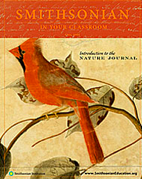
Decoding the Past: The Work of Archaeologists In these lessons, students use the methods of archeologists to identify and interpret artifacts from a contemporary setting (Grades 4-8).
Native American Dolls Students examine handcrafted dolls from the National Museum of the American Indian, drawing connections between the objects and Native cultures, communities, and environments (Grades 4-8).
Perfectly Suited: Clothing and Social Change in America Students consider the connections between clothing and society, both past and present. The focus is on the nineteenth century (Grades 4-8).
Introduction to the Nature Journal Students exercise the observation skills that are essential to writing, visual art, and science.
Under the Spell of Spiders These lesson plans examine the important roles of that spiders play in the environment.
Mailing Address:
Smithsonian Center for Education and Museum Studies
P.O. Box 37012, MRC 508
Washington, DC 20013-7012
Tel: 202.633.5330
Fax: 202.633.5489
Email: [email protected]
Smithsonian Center for Education and Museum Studies Website Team:
This website is a collective effort by staff of the Smithsonian Center for Education and Museum Studies. Design and production were done by web firm AKQA.
Stephanie Norby
Executive Director
Michelle Knovic Smith
Director of Publications and Media
Darren Milligan
Senior Media Designer and Webmaster
Toni Willis
IT Specialist
Smithsonian Photography Initiative
|
The Smithsonian Photography Initiative introduces you to extraordinary collections of photographs and to an understanding of the integral roles photographs play in our lives. Photography and the Smithsonian were born within a decade of each other in the mid-19th century. The fledgling Smithsonian was quick to adopt the camera to advance its mission, cataloging plant and animal species and documenting the grandeur of the American landscape as well as its original inhabitants. Photography brought the faraway near and made visible the previously invisible. Today we have more than 13 million images in some seven hundred collections throughout our museums and research centers. The collections are organized by museum and discipline—for instance, the National Museum of Natural History holds natural science images in its collections, the National Air and Space Museum houses images of flight in its archives, and the National Museum of African Art holds photographs of Africa in its collections. We believe that the Smithsonian’s ability to look at photography broadly and in context makes the Institution unique. Beyond locating and describing the hundreds of Smithsonian photography collections, the SPI website lists all the current and upcoming photography programs that happen at the Smithsonian, both online and on the ground. |
|
| Welcome message: |
National Postal Museum
|
Click the play button above for a special message. |
The National Postal Museum, a Smithsonian Institution museum, is located in the old Post Office building next to Union Station in Washington, D.C. The Museum was created by an agreement between the Smithsonian Institution and the United States Postal Service in 1990 and opened to the public in 1993. The Museum is dedicated to the preservation, study and presentation of postal history and philately. The museum uses exhibits, educational public programs and research to make this rich history available to scholars, philatelists, collectors and visitors from around the world. The National Postal Museum offers a variety of materials and services for educators and students. |
National Air and Space Museum
|
The Smithsonian Institution’s National Air and Space Museum maintains the largest collection of historic aviation- and space-related objects in the world. It is also a vital center for research into the history, science, and technology of aviation and space flight, as well as planetary science and terrestrial geology and geophysics. The Museum has two display facilities. The National Mall building in Washington, D.C. has hundreds of artifacts on display including the original Wright 1903 Flyer, the Spirit of St. Louis, the Apollo 11 command module, and a lunar rock sample that visitors can touch. The Steven F. Udvar-Hazy Center displays many more artifacts including the Lockheed SR-71 Blackbird, Boeing B-29 Superfortress Enola Gay and Space Shuttle Enterprise. The National Air and Space Museum offers a variety of free educational programs for school groups and organized youth groups. See http://www.nasm.si.edu/education for more information. |
    |
| Play welcome message: |
| Lincoln and Ballooning Resources: | ||
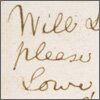
|
Lincoln and Thaddeus Lowe Objects in the Collection |

|
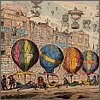
|
The Birth of the Balloon Art Collection |

|
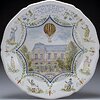 |
Balloonamania
|
|
|
||
| Educator Resources: | ||
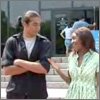
|
Student Orientation Videos These videos give students a preview of what they will see and things to know before coming to the National Air and Space Museum on the Naitonal Mall or the Udvar-Hazy Center. |

|
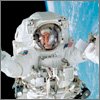
|
Teaching Resources Access the many teaching resources available from the National Air and Space Museum. |

|
Smithsonian Institution Archives

Smithsonian Institution Archives has a variety of resources online about Abraham Lincoln and the Civil War. We have digitized original documents and images, including a diary, letters, photographs and engravings. We will be adding images during the course of 2009. Our primary sources can be used in your classroom without further permissions.
Please explore our resources by clicking on the following links:
|
Resources: This Virtual Exhibit area contains the handouts and materials for the "Lincoln’s Deathbed: Images of a Martyred President" online conference session by Pamela Henson. |
||
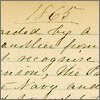
|
Handout:
|

|
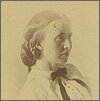
|
Mary Henry diary
|

|
|
||
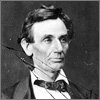
|
Lincoln in the Smithsonian Institution Archives View images of Abraham Lincoln and his family, as well as historic exhibits and artifacts. (Resource coming soon) |

|
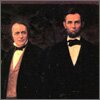
|
Joseph Henry: Science Advisor, by Marc Rothenberg Read an essay by the editor of The Papers of Joseph Henry on Henry’s role as a science advisor to presidents, including Abraham Lincoln. |

|
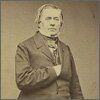
|
“Interruptions and Embarrassments”: The Smithsonian Institution during the Civil War, By Kathleen W. Dorman Read an essay by the associate editor of The Papers of Joseph Henry about the impact of the Civil War on the Smithsonian Institution. |

|
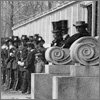
|
Smithsonian Institution Archives View Lincoln-related images from Smithsonian Institution Archives in “SIRIS,” the Smithsonian Institution Research Information System database. |

|
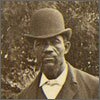
|
Solomon Brown Letters: Read letters from a free African American man who worked at the Smithsonian for over fifty years, including his reflections on the Civil War. |

|
National Museum of American History

The Smithsonian’s National Museum of American History dedicates its collections and scholarship to inspiring a broader understanding of our nation and its many peoples. We create opportunities for learning, stimulate imaginations, and present challenging ideas about our country’s past.
The Museum collects and preserves more than 3 million artifacts—all true national treasures. We take care of everything from the original Star-Spangled Banner and Abraham Lincoln’s top hat to Dizzy Gillespie’s angled trumpet and Dorothy’s ruby slippers from “The Wizard of Oz.” Our collections form a fascinating mosaic of American life and comprise the greatest single collection of American history. Learn more about our museum at http://americanhistory.si.edu
|
Abraham Lincoln: An Extraordinary Life
Image Gallery: |
||
|
A Letter to Abraham Lincoln
After reading Mr. Lincoln’s Whiskers, children can engage in several related activities, including a computer-based project, a creative craft, and a field trip right from the book! The activities are intended for use with children from kindergarten to fourth grade in classrooms, during afterschool programs, and at home. Each downloadable activity includes a parent and teacher guide along with directions and historical background information. |
||
|
America’s New Birth of Freedom: Documents from the Abraham Lincoln Presidential Library and Museum
|
||
|
The Gettysburg Address
|
||
|
Harry Rubenstein and Abraham Lincoln: An Extraordinary Life
Harry Rubenstein is the Chair of the Division of Politics and Reform at the National Museum of American History. He curated the exhibition Abraham Lincoln: An Extraordinary Life and is a presenter during the virtual conference. Produced by Beth Py-Lieberman, Ryan Reed, and Molly Roberts for Smithsonian.com. |
||
|
Life of Lincoln: 1809-1865
Produced by Ryan Reed and Brian Wolly for Smithsonian.com. |
||
|
||
|
Related Resource:
"A Handy Kit for Do-It-Yourself Critics" by Ralph Hattersley, 1962. |
||
National Portrait Gallery

The Smithsonian’s National Portrait Gallery tells the story of America through the individuals who have shaped U.S. culture. Through the visual arts, performing arts, and new media, the Portrait Gallery portrays poets and presidents, visionaries and villains, actors and activists who speak American history.
The One Life: The Mask of Lincoln exhibition concentrates on presidential portraits to show the changing face that Abraham Lincoln presented to the world as he led the fight for the Union. Shaping himself to the uncertainties of the present, mindful of his role as the heir to the Founding Fathers, Lincoln led the nation where it never intended to go: from a political crisis over states’ rights to the revolutionary act of abolishing slavery. What is uncanny is how Lincoln moved toward this conclusion in public, before an audience fascinated and yet bewildered by the workings of an extraordinary mind.
 Featured Lincoln Resources:
Featured Lincoln Resources:
- One Life: The Mask of Lincoln Online Exhibition
- One Life: The Mask of Lincoln Lesson Plans: Integrating portraiture into the classroom provides exciting opportunities to connect students with history, biography, and visual art. The portraits found in One Life: The Mask of Lincoln have incredibly useful classroom application as your students study Abraham Lincoln and the Civil War. The National Portrait Gallery offers five lesson plans that can be used in conjunction with the One Life: The Mask of Lincoln exhibition. All lessons are designed for grades 4–12 in United States history classes.
- Sample Lesson: “Lincoln in Richmond”
- Audio Tour of One Life: The Mask of Lincoln provided by National Portrait Gallery Historian David Ward
-
NPG Collections Search
 Featured Educator Resources:
Featured Educator Resources:
- “Reading Portraiture” Guide for Educators [PDF]: Learn how to use portraits as a tool to teach about significant individuals and the eras in which they lived.
- Posters to Go [PDF]: Interested in a set of teaching posters for your classroom? Check out the Posters to Go program.
- Online Education Resources: The Portrait Gallery has a variety of resources for school and community audiences that have been developed to complement our exhibitions. Resources can be viewed and printed online or downloaded as PDF files.

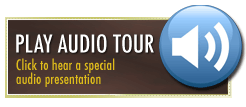
























 Smithsonian’s History Explorer
Smithsonian’s History Explorer





